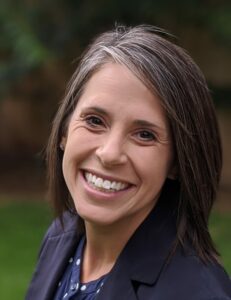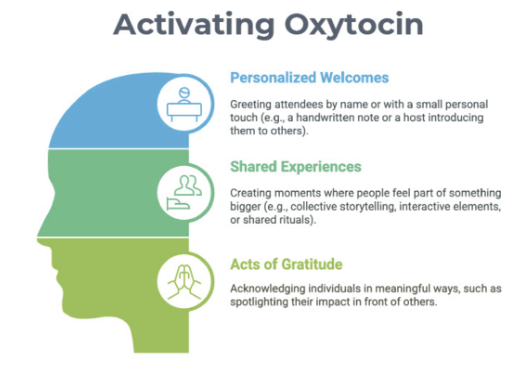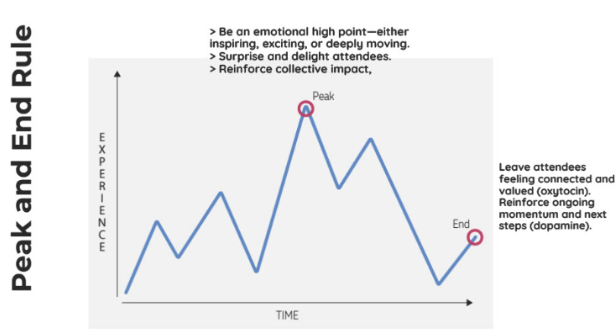
Emily Gonzales
People give when they feel emotionally connected—so events should be engineered to build relationships and reinforce a donor’s sense of purpose.
Events as a Key Tool in Major Giving
Fundraising events are often seen as high-effort, low-return endeavors when it comes to major giving. However, when structured strategically, events can be powerful relationship-building tools that move individuals along the major gift pipeline.
Event attendance is a key predictor of increased giving and major gift potential. Despite that, many fundraisers struggle to see the true ROI of fundraising events. If an organization is choosing between hosting a gala and focusing on major gifts, the best investment is always in major gift strategy. But for organizations that already host fundraising events, ensuring they actively support major giving is essential to maximizing long-term impact.
The key takeaway? Events should be a strategic part of the donor engagement cycle, not just a standalone fundraiser.
Throughout my career, I have worked extensively in fundraising and donor engagement, from overseeing large-scale alumni events at a university—including Homecoming and milestone reunions—to advising nonprofit clients on strategic donor stewardship and cultivation. I was recently inspired by the insights of Mallory Erickson, a fundraising strategist who emphasizes the science behind effective donor engagement. Using her insight and the collective expertise of my MPW team, we’ve outlined a proven approach to integrating events into a major gift strategy before, during, and after the experience.
Before the Event: Aligning Event and Development Strategy
Fundraising events should be deliberately designed to deepen donor relationships, maximizing oxytocin and dopamine release—chemicals tied to trust, bonding, and generosity. In fact, oxytocin can increase empathy and prosocial behavior, activating your donors’ desire to act cooperatively to benefit others.

Collaboration Between Event & Development Teams
A successful fundraising event requires coordination between the event team and the major gifts team. The event manager handles logistics, while major gift officers (MGOs) and development directors focus on donor cultivation.
- Pre-event planning meetings to ensure MGOs know which high-priority donors will be attending, and which top prospects need an additional invitation phone call to remind them to RSVP, and develop engagement strategies.
- Assigning relationship-building roles so MGOs can focus on meaningful donor conversations instead of event logistics.
- Strategic seating assignments, pairing major donors with board members, leadership, or beneficiaries who can deepen engagement.
Pre-Event Donor Engagement Strategies
Erickson recommends trying introductions and story cliff-hangers to increase generosity and belonging chemicals:
- Pre-event introductions: Connect key donors with each other, board members, or staff in advance to build anticipation.
- Anticipation-building storytelling: Tease a major impact reveal or special announcement to trigger excitement and curiosity.
A few more ideas include:
- Consider how your volunteer committee could call attendees or make introductions during the event.
- Personalized outreach: Highlight mission-driven moments to look forward to, creating an emotional hook before they even arrive.
During the Event: Activating Generosity Through Connection & Storytelling
Erickson cites evidence that people give when they feel emotionally connected—so events should be engineered to build relationships and reinforce a donor’s sense of purpose. Examples of engagement tactics include:
- Strategic networking tools: Erickson suggested name tags with conversation starters (e.g., “Ask me why I support [organization]”).
- Mission-driven connections: Replace random mingling with intentional interactions, such as small group discussions on impact.
- Emotional storytelling: Frame speeches, auction item descriptions, and testimonials to create an emotional arc that triggers oxytocin and dopamine.
- Gratitude activation: Another idea from Erickson is the “We Built This Together” wall where attendees share what they love about the organization.
- Symbolic donor recognition: Lapel pins or subtle visual cues that recognize donors who give during the event, making them feel part of something larger.
Ending on a High Note: Applying the Peak-End Rule
The Peak-End Rule, a concept coined by psychologist and economist Dr. Daniel Kahneman and by researcher Dr. Barbara Fredrickson, suggests that people judge an experience largely by its most intense moment and its conclusion. Ensuring attendees leave on an emotional high note increases their likelihood of long-term engagement. Examples include:
- Final moments of gratitude: A heartfelt, personal thank-you from leadership reinforcing the event’s impact.
- Emotional storytelling crescendo: Close with a moving beneficiary story, impactful video, or audience-driven moment of connection.
- Meaningful parting gifts: A handwritten note from a beneficiary, an impact photo, or a clear “Next Steps” card to keep engagement going.
- Encouraging reflection: Prompt attendees to share their favorite moment or takeaway, reinforcing their emotional investment.

After the Event: Converting Engagement into Long-Term Giving
The event isn’t the final step—it’s an entry point into deeper donor relationships. Strategies that work include:
- Follow-up based on emotional engagement: Reference their gratitude wall message, conversation, or connection in personalized outreach.
- Segmented post-event engagement:
- First-time attendees: Invitation to a private tour or mission-driven experience.
- Loyal event attendees who haven’t given yet: Offer volunteer role or deeper engagement opportunities.
- Major donor prospects: Personal outreach from leadership.
- Surprise & delight follow-ups: Sending a personalized event photo, handwritten note, or follow-up mission update strengthens the connection.
Long-Term: Using Event Data to Strengthen Major Gift Portfolios
Event attendance is a powerful indicator of donor potential and should be integrated into a data-driven major gifts strategy.
- Frequent event attendees are more likely to make a major gift, according to DonorSearch.
- Your Key Performance Indicator isn’t just event-to-donor conversion—it’s tracking attendance to demonstrate engagement within your moves management program.
- Fundraisers should prioritize engaged attendees over high-capacity prospects who aren’t connected to the mission. Event attendance offers a chance to revisit and re-rank portfolios.
Fundraising events should not be judged solely on money raised that night but on their ability to strengthen donor relationships and increase long-term giving.
Organizations that integrate neuroscience-backed engagement strategies and data-driven event tracking will build stronger donor pipelines and drive more transformational giving; their events will become catalysts for major giving.
References:
Science Direct: Oxytocin infusion increases charitable donations regardless of monetary resources



